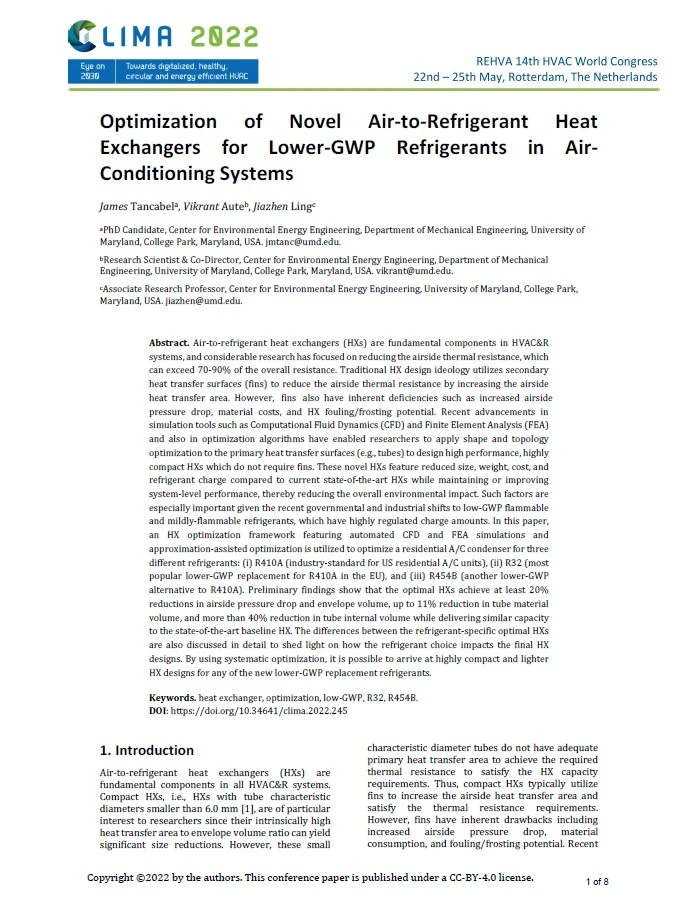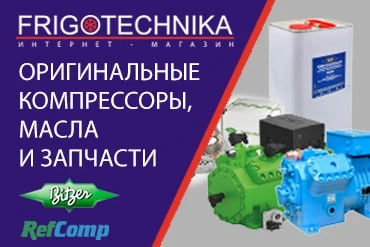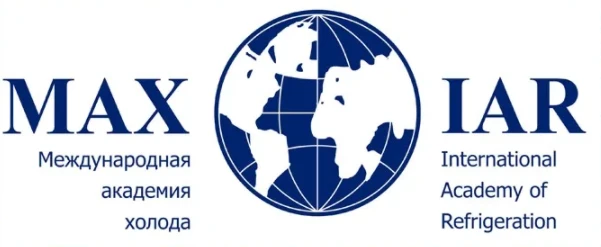Автор: James Tancabel, Vikrant Aute, Jiazhen Ling
Год: 2022Язык: АнглийскийТип: Статьи
Air-to-refrigerant heat exchangers (HXs) are fundamental components in HVAC&R systems, and considerable research has focused on reducing the airside thermal resistance, which can exceed 70-90% of the overall resistance. Traditional HX design ideology utilizes secondary heat transfer surfaces (fins) to reduce the airside thermal resistance by increasing the airside heat transfer area. However, fins also have inherent deficiencies such as increased airside pressure drop, material costs, and HX fouling/frosting potential. Recent advancements in simulation tools such as Computational Fluid Dynamics (CFD) and Finite Element Analysis (FEA) and also in optimization algorithms have enabled researchers to apply shape and topology optimization to the primary heat transfer surfaces (e.g., tubes) to design high performance, highly compact HXs which do not require fins. These novel HXs feature reduced size, weight, cost, and refrigerant charge compared to current state-of-the-art HXs while maintaining or improving system-level performance, thereby reducing the overall environmental impact. Such factors are especially important given the recent governmental and industrial shifts to low-GWP flammable and mildly-flammable refrigerants, which have highly regulated charge amounts. In this paper, an HX optimization framework featuring automated CFD and FEA simulations and approximation-assisted optimization is utilized to optimize a residential A/C condenser for three different refrigerants: (i) R410A (industry-standard for US residential A/C units), (ii) R32 (most popular lower-GWP replacement for R410A in the EU), and (iii) R454B (another lower-GWPalternative to R410A). Preliminary findings show that the optimal HXs achieve at least 20% reductions in airside pressure drop and envelope volume, up to 11% reduction in tube material volume, and more than 40% reduction in tube internal volume while delivering similar capacity to the state-of-the-art baseline HX. The differences between the refrigerant-specific optimal HXs are also discussed in detail to shed light on how the refrigerant choice impacts the final HXdesigns. By using systematic optimization, it is possible to arrive at highly compact and lighter HX designs for any of the new lower-GWP replacement refrigerants.

















Комментарии
Войдите или зарегистрируйтесь, чтобы оставить комментарий